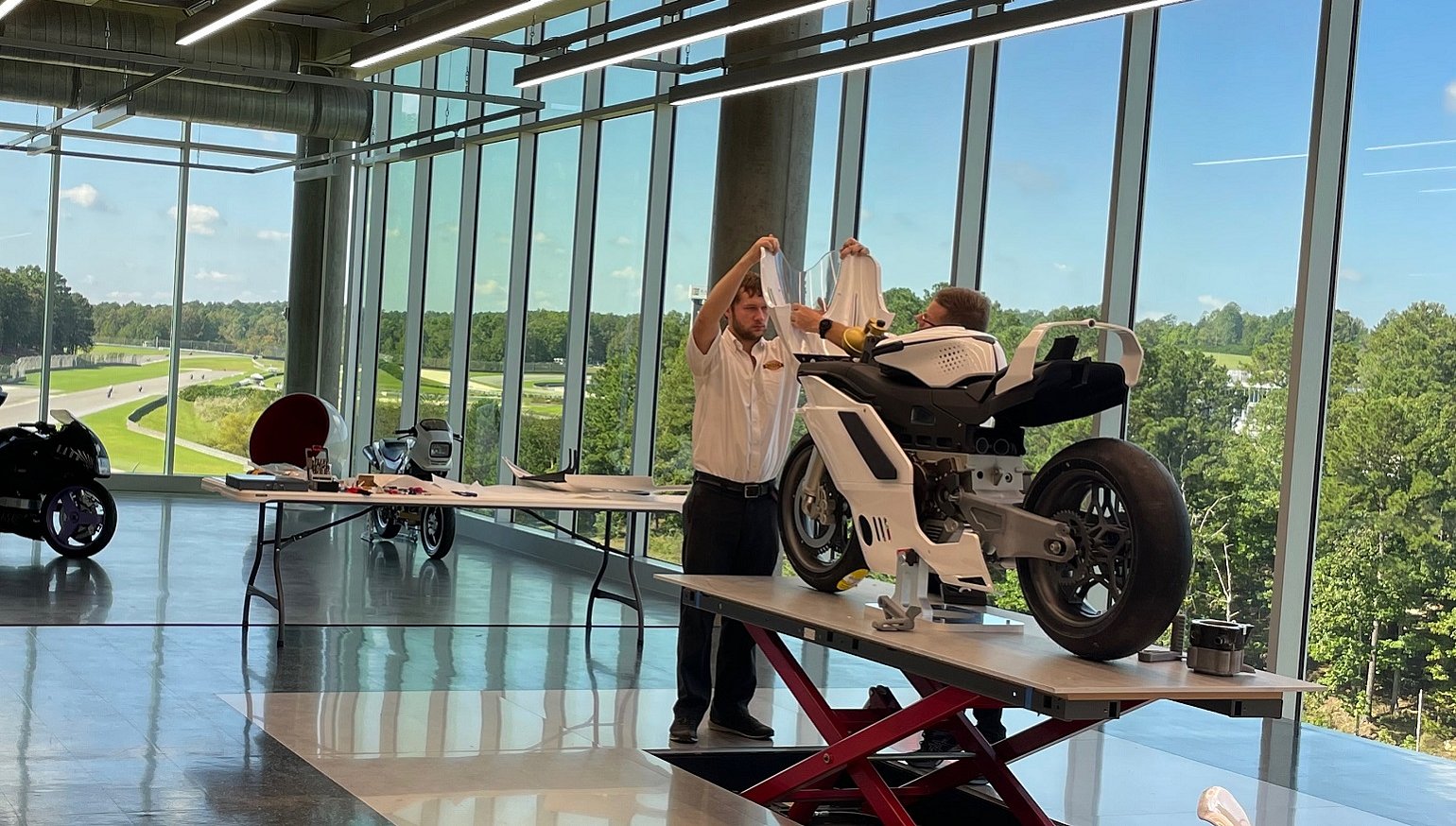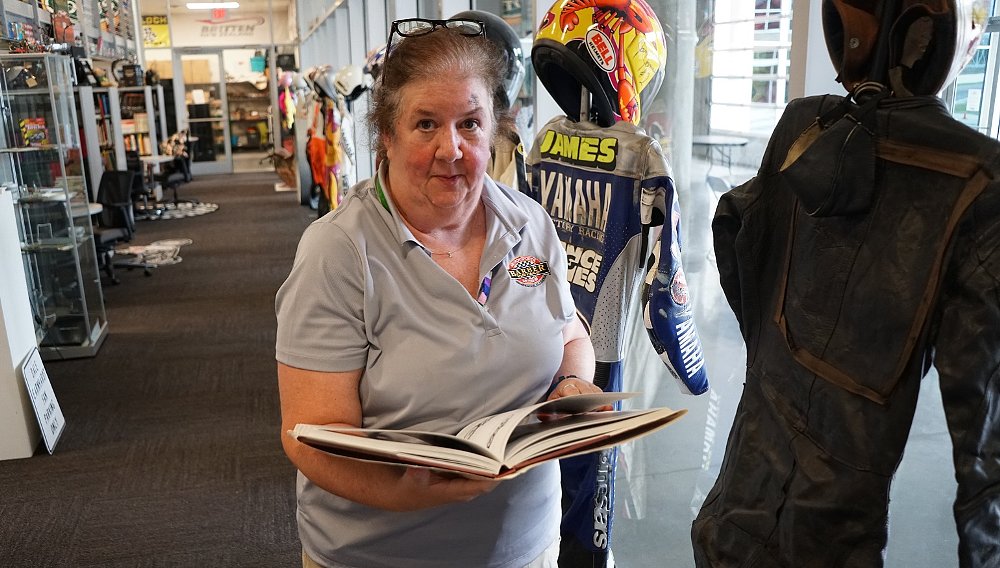Look back at any of the major milestones in your life — your first race win, your first good job, your first date — and ask yourself: If you could do it over again, would you? And what would you do differently?
These were the questions in Pierre Terblanche’s mind as he stood in the Barber Advanced Design Center, surrounded by examples of motorcycles he had designed during his illustrious career. His answers to those questions have produced a futuristic reimagining of the Ducati Supermono that not only shows what Terblanche would do differently today, but also leads the way for the next generation of motorcycle designers to build bikes in ways that no one, not even Terblanche, has yet imagined.
The original Supermono had a 550 cc single-cylinder engine designed to compete in a racing series for singles. Singles are known neither for their smooth operation nor their impressive power, but Ducati had a trick up its sleeve. Taking the 90-degree L-twin from the championship-winning 888, they blanked off the rear cylinder and replaced it with a balance rod operated by a connecting rod attached to the crankshaft where the rear cylinder’s rod originally went. This preserved the near-perfect balance factor that makes L-twins so smooth, and allowed the single to rev up to 11,000 rpm and put out up to 76 horsepower. Because the 888 crankcases were built for the stresses of a twin, the Supermono engine was both robust and lightweight, weighing less than 300 pounds. Only 67 were ever built.
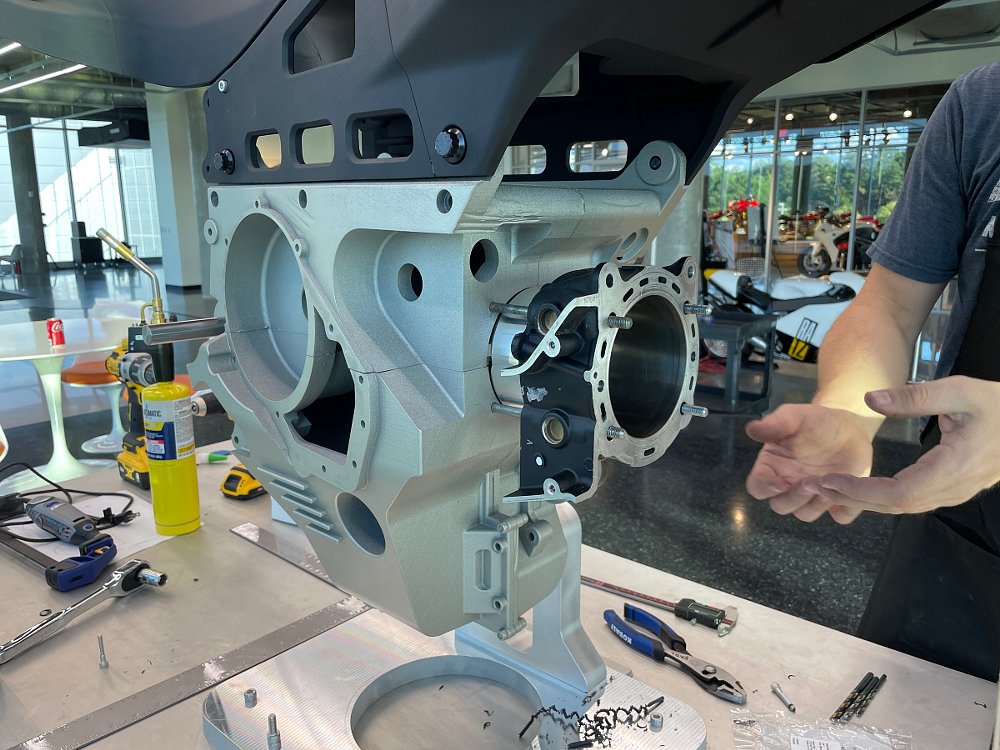
The engine and chassis development were the work of Claudio Domenicali and Massimo Bordi. Pierre Terblanche was called in to design and build the skin to cover the bones. These were pre-computer days, when everything was analog and each body panel started out as a handmade piece of plasticene modeling clay. This material had its drawbacks, especially in the non-air-conditioned studio where Terblanche set up shop. The clay was heated up to make it pliable and easy to form, but sometimes it didn’t cool off enough to become rigid. Terblanche likened it to working with ice cream, and jokes that this is why the shape of the Supermono is so soft and rounded.
Now, almost 30 years later, the process of designing a motorcycle is less hands-on and more push-button. And it’s no longer the exclusive domain of motorcycle manufacturers. Brian Case, formerly the co-founder of Motus Motorcycles, is the director of the Barber Advanced Design Center in Birmingham, Alabama, and he brought the full force of modern technology to a concept bike to show what can be done with these tools and where motorcycling can go in the future. To that end, he flew Pierre Terblanche from his home in South Africa to Alabama for a couple of months last year to collaborate on an update of one of Terblanche’s first big design jobs, the Ducati Supermono.
"The idea is to put the Barber Advanced Design Center on the map," Case says. "It shows what we can do working on this project with this veteran designer of Ducati fame, revisit one of his iconic designs, and bring it up to speed." With "a good thousand" potential projects in the Barber collection, Case says, "We finally boiled it down to something that's a piece of history, a snapshot of a time when Pierre worked for Cagiva, and was trying to make a name for himself."
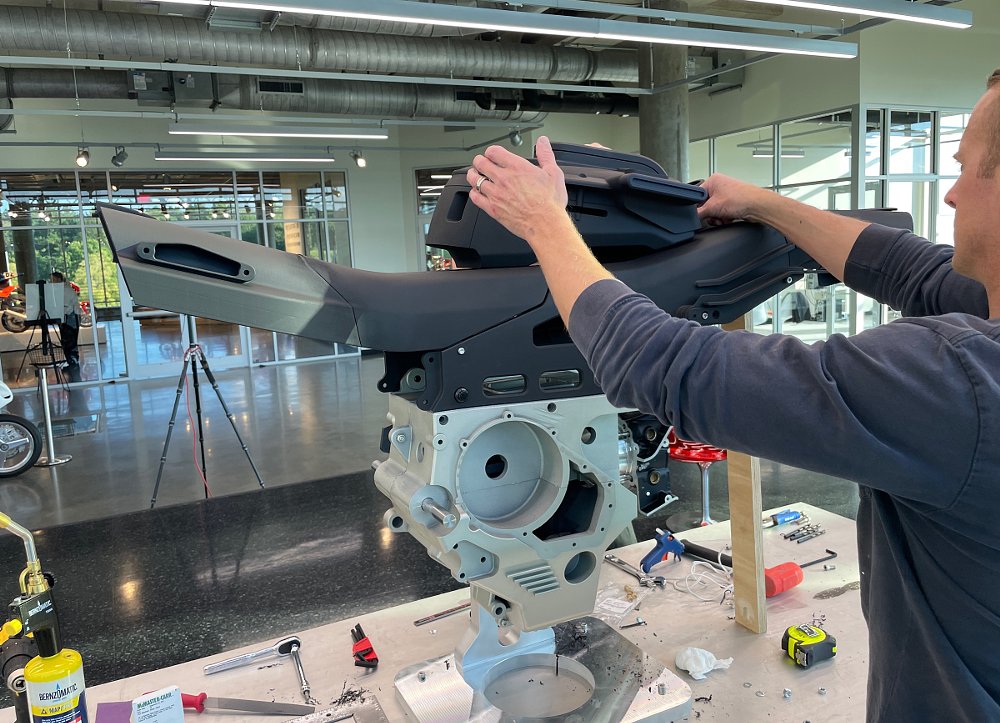
The day Terblanche stood surrounded by examples of his work over the years, recalls Case, "The conversation turned to the Supermono because he kept looking at it, staring at it, like this is the one that really started it all. It meant something emotionally to him to be staring at that bike. He drove the decision — if there was one bike he wanted to revisit it was the Supermono because it was done at a time when there were no computers, no digital tools, and it was a completely analog vibe."
Terblanche flew back to Johannesburg and started with a clean sheet — or screen. "The whole thing was done over Zoom and WhatsApp and Microsoft Teams," Case says. "We used every tool to communicate. That’s what design studios have to do now."
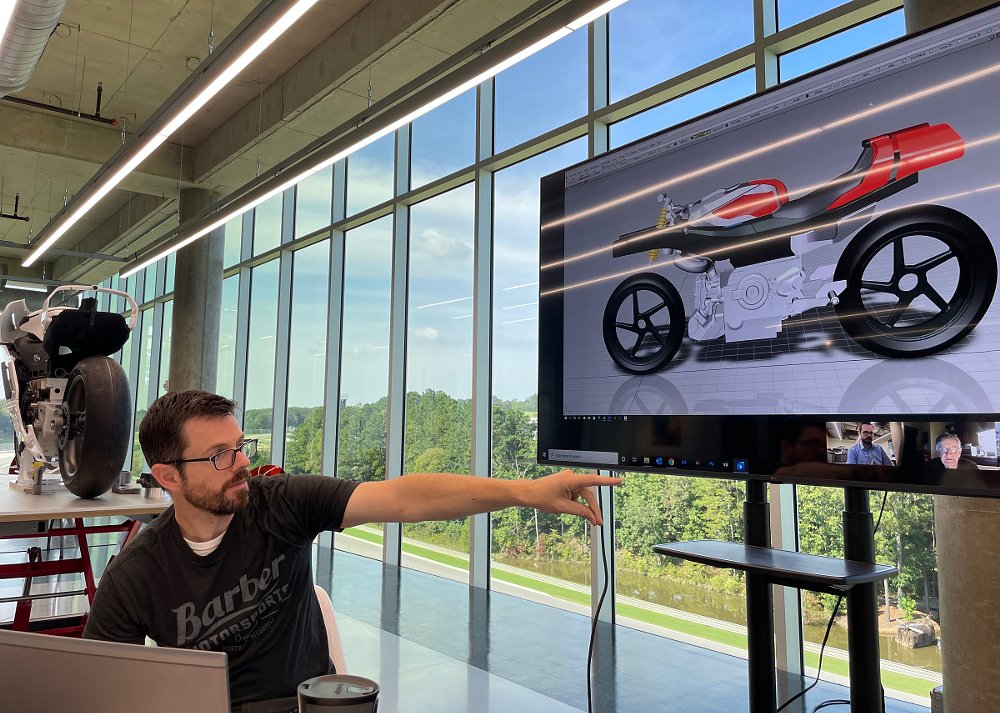
The project was anything but analog, and is still ongoing. Terblanche does the design work and sends it to Case, who turns to a 3D printer to produce the parts. "While Pierre is in Johannesburg doing his designs, I'm here making models and sanding and painting, doing all the grunt work. I'm the model-maker in this scenario. There's still a little bit of sanding and grinding and painting, but to me that's the fun part."
The concept Supermono engine is a clean-sheet design, although it will feature the same balancing rod as the original. The cylinder head is based on Testastretta architecture; the rest will be completely new and unique.
"This has nothing to do with Ducati," Case says. "It's an internally sponsored project, called the Supermono only because that's what Ducati called it. The only thing we bought off the shelf was the Dunlop tires."
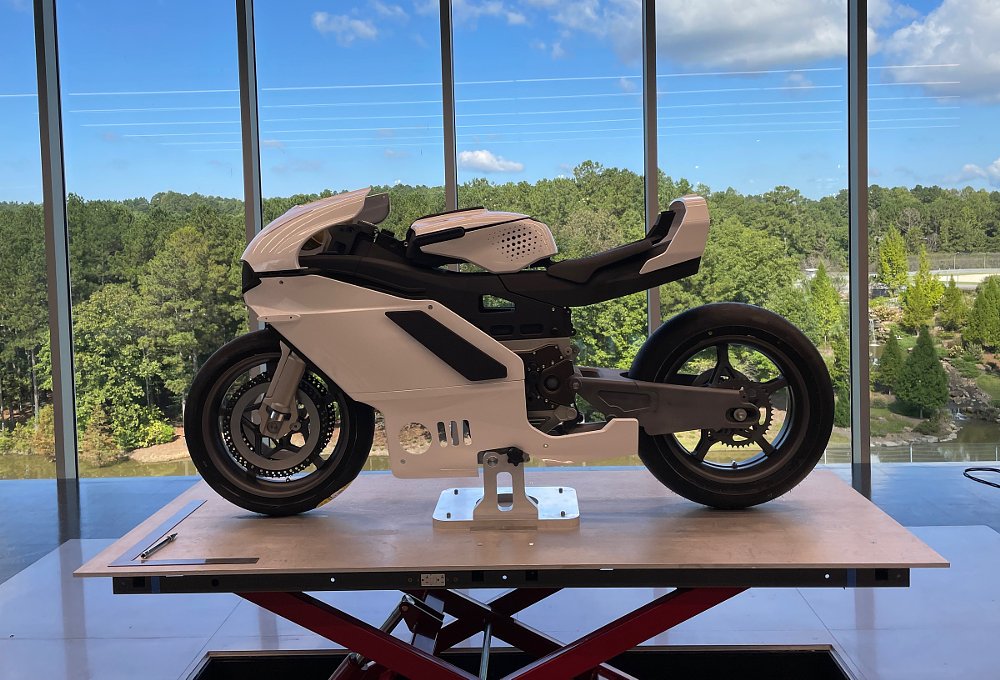
A running production model is a long way down the road for now, and a lot of details would need to be ironed out first. "What we’re proposing is that it would be some sort of composite material, forged carbon, one piece," Case says. He also makes it clear the concept Supermono isn't the last of its kind.
"This is the first of many projects we're going to explore. It's by no means a Ducati-based project, it just so happened that Pierre had the Ducati history. For example, Pierre is a fan of 1950s singles. We have several Rumis and Motobis, and those could even inspire an electric bike platform. New ways of thinking about architecture is what we want to do here, and not just with Pierre. There's a small group of designers who've reached out to us and participated in getting the Design Center off the ground, and I'm hoping in the future we do more projects with them."
Given the purpose of the project — to inspire future designers to think outside the box — Case is archiving all the work flow and will make it publicly available to show the behind-the-scenes process of design. "Traditionally, inside an OEM design studio, they never let anything out. It's all top-secret. They don't like to show it to anybody. But we want designers to be inspired by what we're doing here. We want them to come here and learn and do workshops. It's all about showing the work."
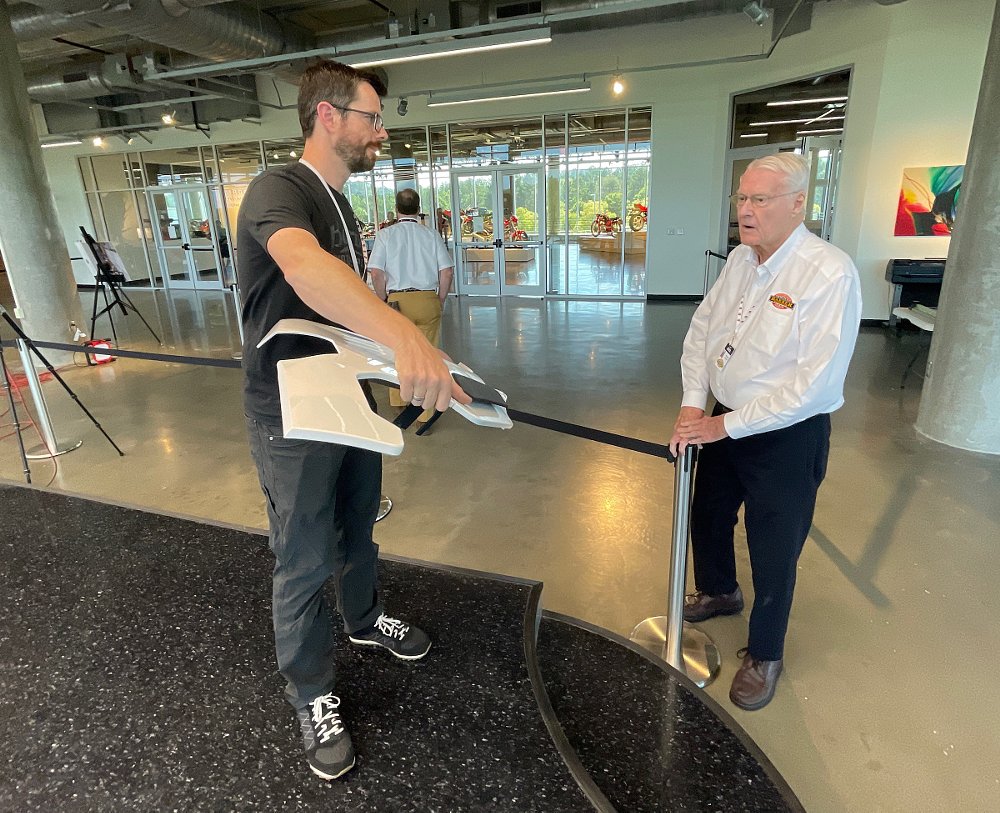
Pierre Terblanche is the first famous designer to work with the Barber Design Center, but he won't be the last. Future collaborators might not even be motorcyclists. "It could be professional motorcycle designers or people from different professions, like architecture or furniture design," says Case, whose mandate from Barber Vintage Motorsports Museum founder George Barber himself was not to define future projects too much — in essence specific instructions to not be specific.
Case says Pierre Terblanche is having a blast remotely designing the concept Supermono. No doubt computer-aided design and 3D printing are making the job a lot easier than it was in the days when he stood sweating in a sweltering studio while modeling clay melted off the frame. And it doesn't hurt that he gets the chance to ask himself one of life’s big questions — What would I do differently? — and show the world the answer.

 Membership
Membership

